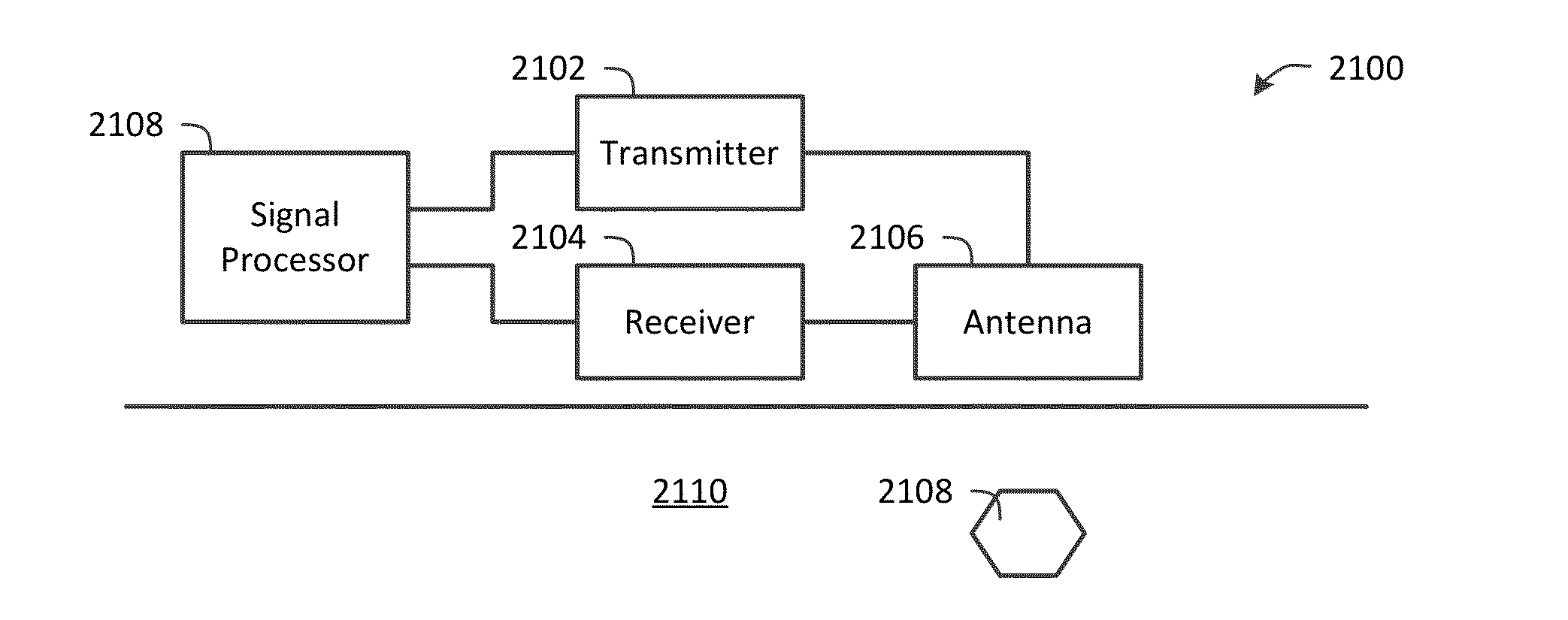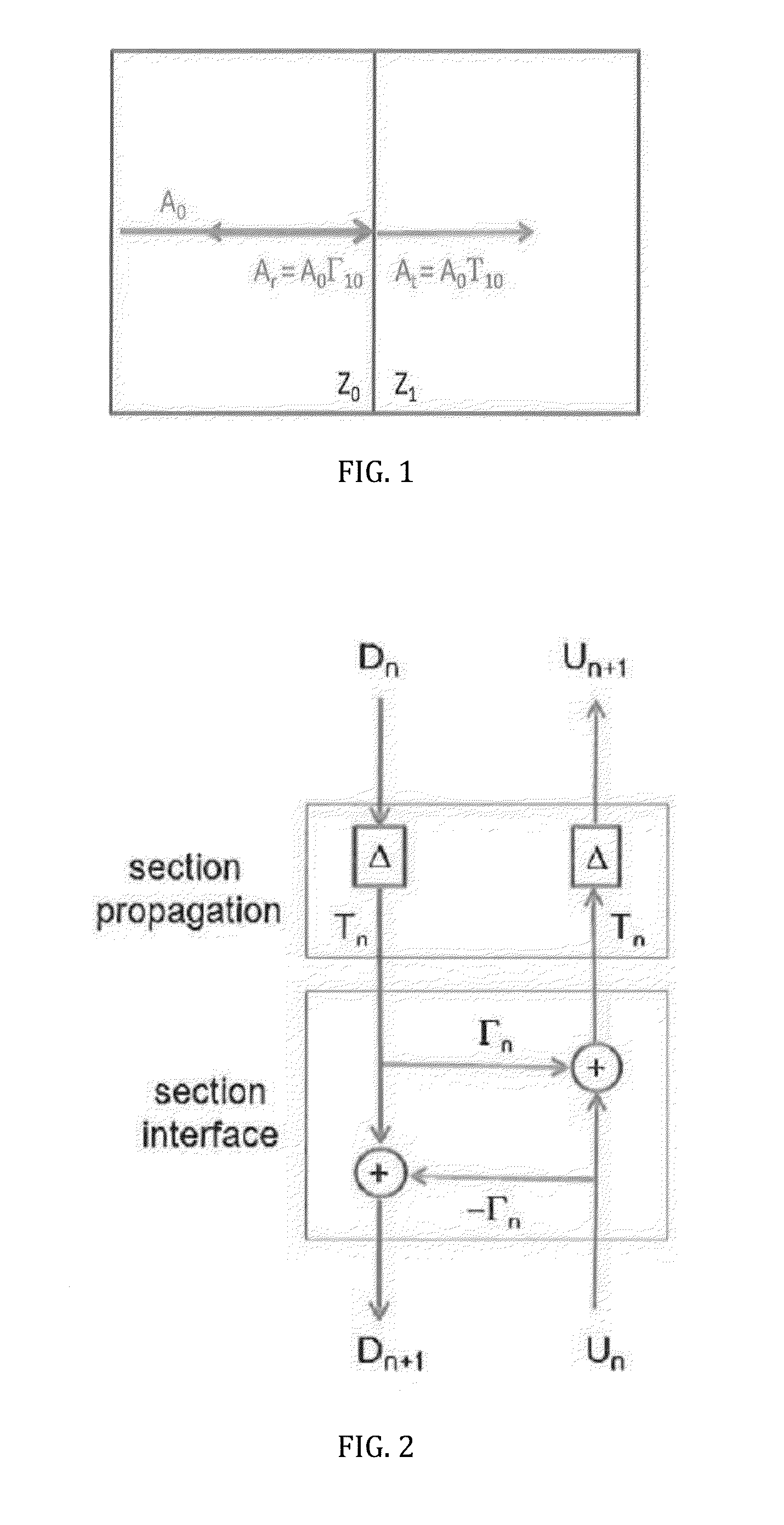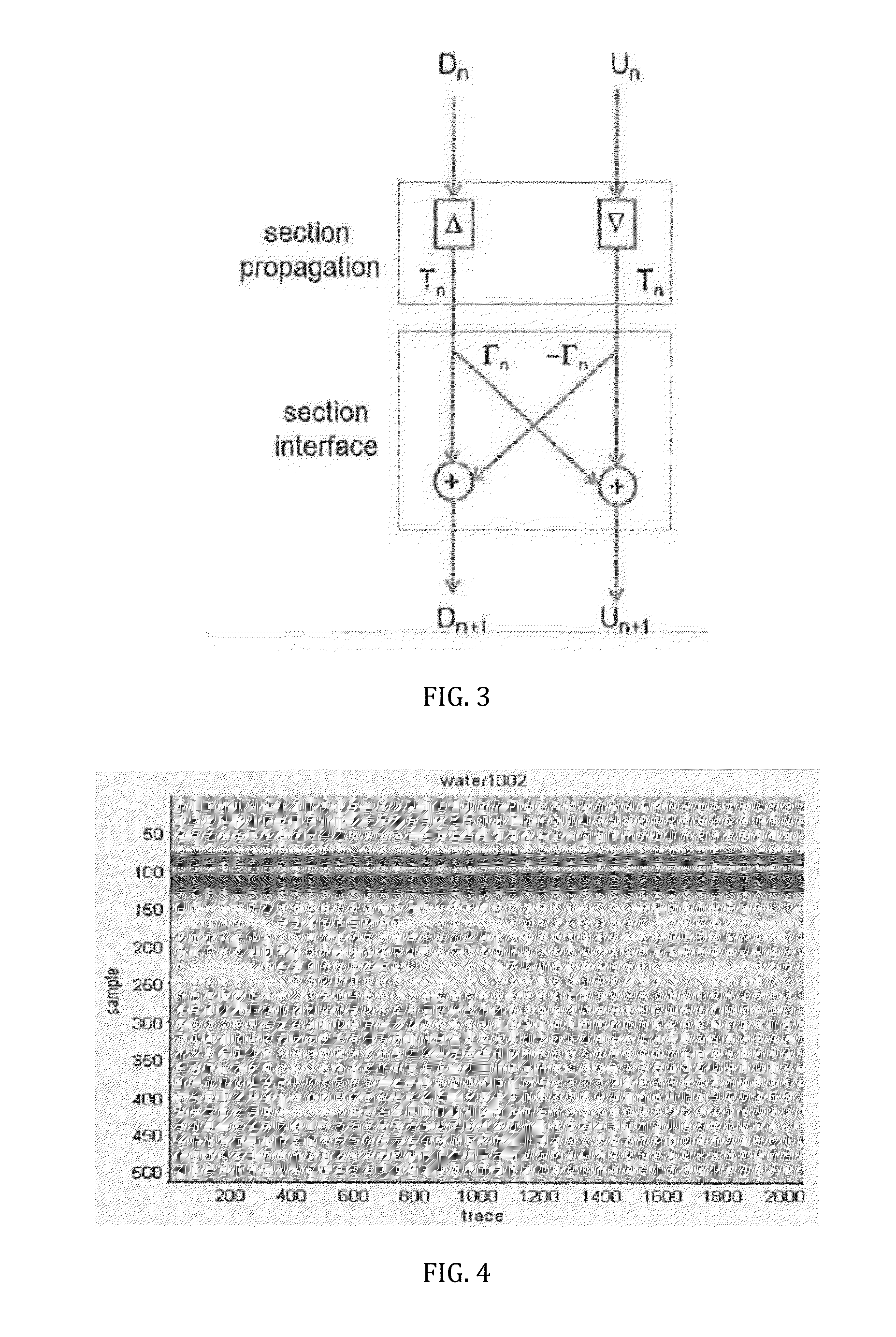Method and Apparatus for Detecting Subsurface Targets Using Data Inversion and a Temporal Transmission Line Model
a technology of transmission line and data inversion, applied in the field of ground penetrating radar, can solve the problems of high false alarm rate, complex problem of accurate automated detection and identification of targets, such as ieds, and achieve the effect of fewer false alarms and better target detection
- Summary
- Abstract
- Description
- Claims
- Application Information
AI Technical Summary
Benefits of technology
Problems solved by technology
Method used
Image
Examples
Embodiment Construction
[0035]While the making and using of various embodiments of the present invention are discussed in detail below, it should be appreciated that the present invention provides many applicable inventive concepts that can be embodied in a wide variety of specific contexts. The specific embodiments discussed herein are merely illustrative of specific ways to make and use the invention and do not delimit the scope of the invention.
[0036]Traditional ground penetrating radar (GPR) yields reflectivity of subsurface reflectors. Target reflectivity is due to mismatches in the electromagnetic properties of the target relative to the surrounding medium. The present invention post-processes the GPR return traces to obtain information of the subsurface that goes beyond radar reflectivity. More specifically, the inversion process solves for the impedance of the reflector, from which the constitutive parameters of the reflectors can be calculated. This method thus yields more target information that ...
PUM
 Login to View More
Login to View More Abstract
Description
Claims
Application Information
 Login to View More
Login to View More - R&D
- Intellectual Property
- Life Sciences
- Materials
- Tech Scout
- Unparalleled Data Quality
- Higher Quality Content
- 60% Fewer Hallucinations
Browse by: Latest US Patents, China's latest patents, Technical Efficacy Thesaurus, Application Domain, Technology Topic, Popular Technical Reports.
© 2025 PatSnap. All rights reserved.Legal|Privacy policy|Modern Slavery Act Transparency Statement|Sitemap|About US| Contact US: help@patsnap.com



